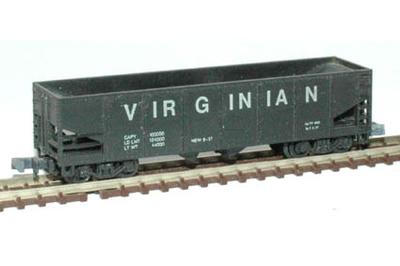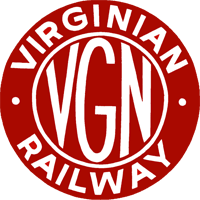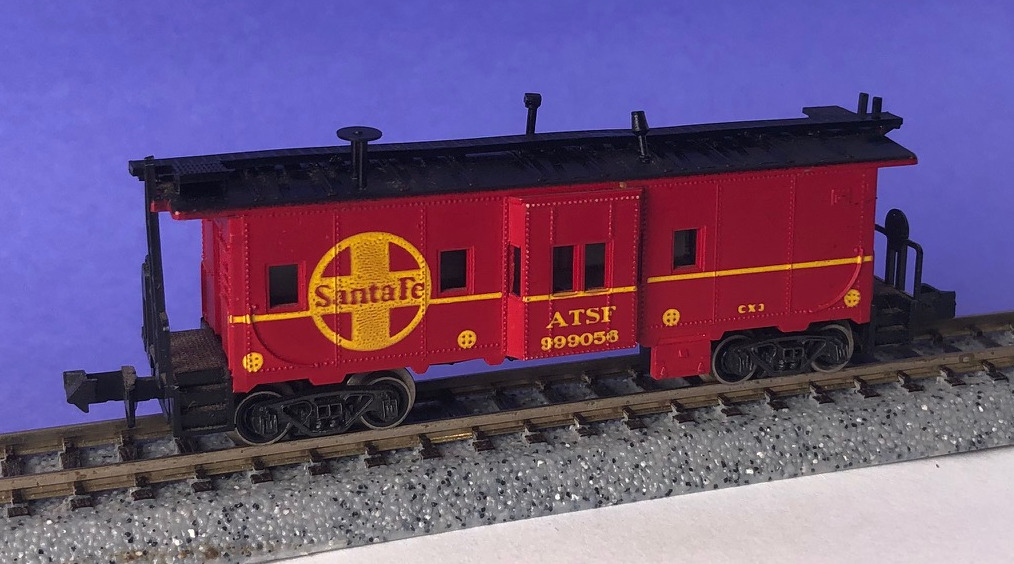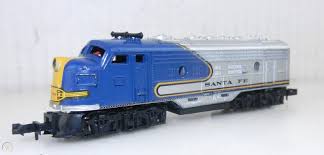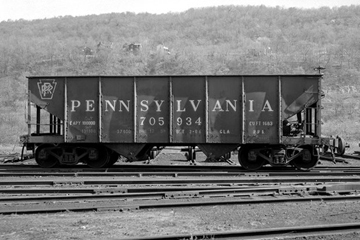Model Information: This is an early (1960s) model from Arnold. It features pretty good detail in the molding and exceptional (for 1967 or so) quality printing. The blackened metal wheels, while not being low-profile are not excessively flanged and may even run OK on Code 55 track. Unfortunately the trucks are of the 'clip-on' variety and may prove difficult to swap out for MTL trucks. Some of these models come with factory coal loads which are adequate for today and quite impressive for the 1960s. These loads are easy to remove if you wish to replace them with something better.
Prototype History: The open hopper is an evolution of the gondola, a simple freight car used for the transportation of various materials without and facility for protection from the elements. The hopper had higher sides than the gondola and possessed a mechanism on the bottom (bay doors) for discharging the load.
2-Bay ribside coal hoppers were in common use in the first half of the 20th century. The ribbed sides added stability so the loads would not bow out the side of the hoppers. Steel was in plentiful supply after the second world wars and these cars were pretty much everywhere coal was being produced or consumed.
2-Bay ribside coal hoppers were in common use in the first half of the 20th century. The ribbed sides added stability so the loads would not bow out the side of the hoppers. Steel was in plentiful supply after the second world wars and these cars were pretty much everywhere coal was being produced or consumed.
Road Name History: The Virginian Railway (VGN) was conceived early in the 20th century by two men. One was a brilliant civil engineer, coal mining manager, and entrepreneur, William Nelson Page. His partner was millionaire industrialist, Henry Huttleston Rogers. Together, they built a well-engineered railroad that was virtually a "conveyor belt on rails" to transport high quality "smokeless" bituminous coal from southern West Virginia to port on Hampton Roads, near Norfolk, Virginia.
The Virginian Railway Company was formed in Virginia on March 8, 1907 to combine the Deepwater Railway in West Virginia and the Tidewater Railway in Virginia into a single interstate railroad, only a few months after Victoria was incorporated. On April 15, 1907, William Nelson Page became the first president of the new Virginian Railway.
Throughout that profitable 50-year history, the VGN continued to follow the Page-Rogers policy of "paying up front for the best." It became particularly well known for treating its employees and vendors well, another investment that paid rich dividends. The VGN sought (and achieved) best efficiencies in the mountains, rolling piedmont and flat tidewater terrain. The profitable VGN experimented with the finest and largest steam, electric, and diesel locomotives. It was well known for operating the largest and best equipment, and could afford to. It became nicknamed "the richest little railroad in the world."
Norfolk & Western Railway and Virginian Railway merged in 1959.
The Virginian Railway Company was formed in Virginia on March 8, 1907 to combine the Deepwater Railway in West Virginia and the Tidewater Railway in Virginia into a single interstate railroad, only a few months after Victoria was incorporated. On April 15, 1907, William Nelson Page became the first president of the new Virginian Railway.
Throughout that profitable 50-year history, the VGN continued to follow the Page-Rogers policy of "paying up front for the best." It became particularly well known for treating its employees and vendors well, another investment that paid rich dividends. The VGN sought (and achieved) best efficiencies in the mountains, rolling piedmont and flat tidewater terrain. The profitable VGN experimented with the finest and largest steam, electric, and diesel locomotives. It was well known for operating the largest and best equipment, and could afford to. It became nicknamed "the richest little railroad in the world."
Norfolk & Western Railway and Virginian Railway merged in 1959.
Brand/Importer Information:  Founded in 1906 by Karl Arnold in Nuernberg, K. Arnold & Co. began its life producing tin toys and related items. They produced an extensive line of model ships, doll house items and other toys. In 1935, K. Arnold & Co. hired Max Ernst as their managing director. Ernst, not to be confused with the German realist artist of the same name, was a significant factor in the future of Arnold.
Founded in 1906 by Karl Arnold in Nuernberg, K. Arnold & Co. began its life producing tin toys and related items. They produced an extensive line of model ships, doll house items and other toys. In 1935, K. Arnold & Co. hired Max Ernst as their managing director. Ernst, not to be confused with the German realist artist of the same name, was a significant factor in the future of Arnold.
There are several distinct phases of Arnold's model train production. In the period of 1960 - 1962, Arnold marketed the Arnold Rapido 200 product line; this line was very crude yet it also was a sensation because of its much smaller size than TT.
The next phase was from 1963-1967, when the rapido product line begins to swing toward scale representations of the trains. It is during this period that the "Rapido Coupler" comes into production, beginning its widespread use by all model train manufacturers in N-Scale. It was in 1964 that the term "N-Scale" came into use. Between 1968 and 1970, rapido line of trains reached maturity, notably with its turntable and roundhouse. Arnold entered into a business relationship with the U.S. company Revell around 1968, beginning the marketing of Revell Rapido model trains. This relationship was marked by the beginning of production of more accurate North American prototype models by Arnold. This relationship continued for several years, ending in the late 1960s or early 1970s. Arnold continued their expanded production, with new models until the early 1990s.
On Max Ernst's 1976 retirement, Arnold employed perhaps 200 to 250 people, using three facilities in the Nurnberg area. The Company continued under family control until 1995, when Arnold went into bankruptcy and was sold to Rivarossi of Italy. Rivarossi, in turn, also went bankrupt, leading to the sale of all assets to Hornby of the United Kingdom. Production is carried out in China.

There are several distinct phases of Arnold's model train production. In the period of 1960 - 1962, Arnold marketed the Arnold Rapido 200 product line; this line was very crude yet it also was a sensation because of its much smaller size than TT.
The next phase was from 1963-1967, when the rapido product line begins to swing toward scale representations of the trains. It is during this period that the "Rapido Coupler" comes into production, beginning its widespread use by all model train manufacturers in N-Scale. It was in 1964 that the term "N-Scale" came into use. Between 1968 and 1970, rapido line of trains reached maturity, notably with its turntable and roundhouse. Arnold entered into a business relationship with the U.S. company Revell around 1968, beginning the marketing of Revell Rapido model trains. This relationship was marked by the beginning of production of more accurate North American prototype models by Arnold. This relationship continued for several years, ending in the late 1960s or early 1970s. Arnold continued their expanded production, with new models until the early 1990s.
On Max Ernst's 1976 retirement, Arnold employed perhaps 200 to 250 people, using three facilities in the Nurnberg area. The Company continued under family control until 1995, when Arnold went into bankruptcy and was sold to Rivarossi of Italy. Rivarossi, in turn, also went bankrupt, leading to the sale of all assets to Hornby of the United Kingdom. Production is carried out in China.
Item created by: gdm on 2017-03-02 17:48:25. Last edited by gdm on 2022-01-13 09:44:06
If you see errors or missing data in this entry, please feel free to log in and edit it. Anyone with a Gmail account can log in instantly.
If you see errors or missing data in this entry, please feel free to log in and edit it. Anyone with a Gmail account can log in instantly.


